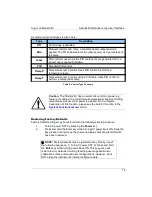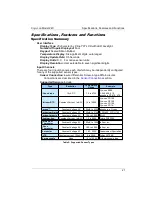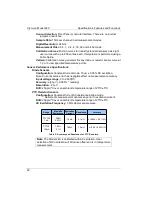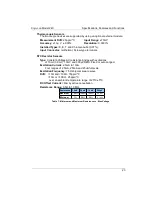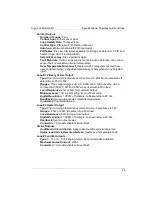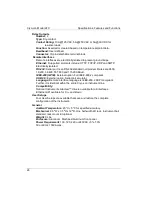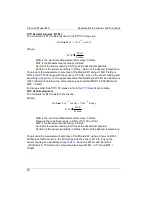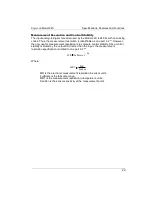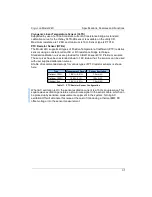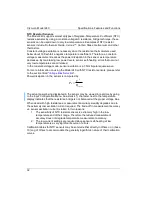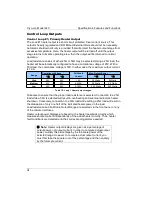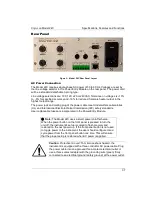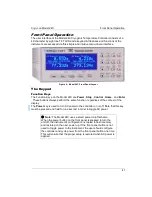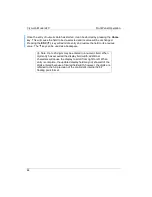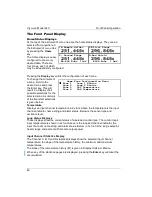
Cryo-con Model 24C
Specifications, Features and Functions
NTC Resistor Sensors
The Model 24C supports almost all types of Negative-Temperature-Coefficient (NTC)
resistive sensors by using a constant-voltage AC resistance bridge technique, these
sensors can be used down to very low temperatures. Examples of NTC resistor
sensors include: Ruthenium Oxide, Cernox™, Carbon Glass, Germanium and other
thermistors.
Constant-voltage excitation is necessary since the resistance thermometers used
below about 10K exhibit a negative temperature coefficient. Therefore, a constant-
voltage measurement reduces the power dissipation in the sensor as temperature
decreases. By maintaining low power levels, sensor self-heating errors that occur at
very low temperatures are minimized.
In the constant-voltage mode, sensor excitation is a 7.5Hz bipolar square-wave.
For more information on using the Model 24C with NTC resistor sensors, please refer
to the section titled "
Voltage Bias Selection
".
Power dissipation in the sensor is computed by:
sensor
bias
d
R
V
P
2
The actual power being dissipated in the sensor may be viewed in real-time by going
to the Input Configuration Menu. An asterisk (*) character next to the temperature
display indicates that the resistance bridge is not balanced at the proper voltage bias.
When used with high resistances, measurement accuracy steadily degrades due to
the extremely low excitation current required. The trade-off in measurement accuracy
vs. sensor excitation current is taken for two reasons:
1. The sensitivity of NTC resistor sensors is extremely high in the low
temperature end of their range. Therefore the reduced measurement
accuracy does not degrade temperature measurement accuracy.
2. The low current settings are required since sensor self-heating at low
temperature is a very significant source of errors.
Calibration tables for NTC sensors may be entered either directly in Ohms or in (base
10) Log of Ohms to accommodate the generally logarithmic nature of their calibration
curves.
32


